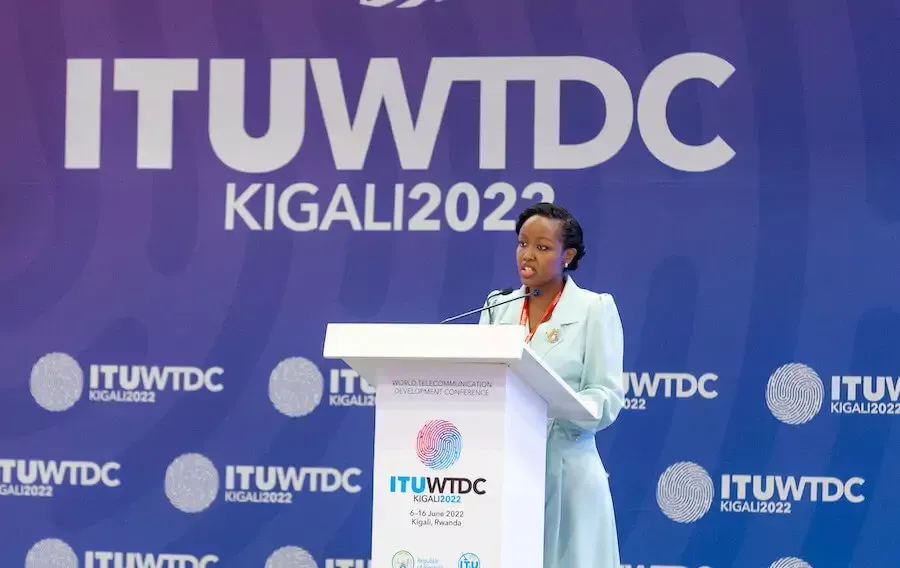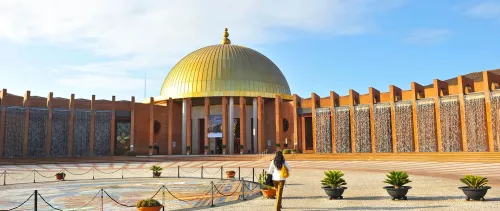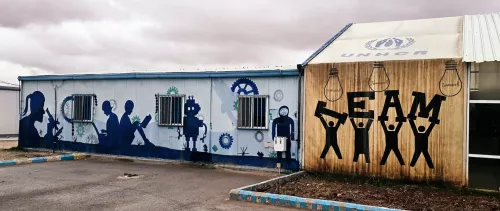
ITU
We caught up with Hon. Paula Ingabire, Rwanda’s Minister of Information Communication Technology and Innovation and Chair of the recent World Telecommunication Development Conference (WTDC) held in Kigali, Rwanda, by the International Telecommunication Union (ITU).
This was the first WTDC to happen in Africa since the establishment of ITU’s Development Sector in 1992. What does it mean for the host country, Rwanda?
For Rwanda, it’s been a privilege to host the very first WTDC in Africa. We’re going to be part and parcel of shaping the [digital development] agenda over the next four years. More important is the ability to host and give the delegates and visitors a taste of Africa and Rwanda, which in many ways we’ve been able to achieve outside the conference facilities.
The first week included a number of events, including the Generation Connect Global Youth Summit that brought together youth representatives from about 115 countries. It was a highly energized, powerful summit. Youth were keen and very engaged in shaping the telecommunication agenda going forward. Listening to their asks and how they really wanted to contribute was very exciting.
What are the key outcomes from this landmark development conference?
Recent resolutions adopted during the plenary session include [continued support for] the school connectivity project, Giga. As we come out of the COVID-19 pandemic, education is one of the sectors that has been heavily affected. School connectivity is essential as we bridge the digital divide.
As we recover better and stronger, this becomes a priority initiative for all of us going forward. Think about the 2.9 billion people [worldwide] that remain unconnected. What will we do differently over the next four years to connect them? What are some affordable and innovative ways of deploying infrastructure quickly? How do we equip [people] with the right skills, devices and content that will also push [to close] the usage gap? So many people live in coverage areas but haven’t been able to benefit from that.
What do you think will be the major opportunities and challenges for the digital development sector over the rest of the current decade?
In terms of opportunities, one is to understand the challenge at hand. Everyone has a better sense of what it’s going to take to close the digital gap. Whether it’s a declaration, an action plan, or resolutions – all give a broad framework under which respective countries are going to deploy resources to close the digital divide.
In terms of challenges, you have different maturity levels in the digital landscape. Finding a one-size-fits-all set of strategies that will close the gap in different parts of the world may be quite a challenge.
Even as we deploy resources and build the right partnerships to close the digital divide, figuring out how we measure that [progress] is still a sticky point, as is aligning on a set of criteria for how we measure readiness, maturity, and growth.
Telecommunications has not historically been a sector where women have been heavily involved, or where gender parity has been a priority. What are the ingredients needed to ensure full mainstreaming of a gender perspective in ICTs?
Things are changing. We’re starting from a common ground of understanding that it’s urgent and important to think about gender mainstreaming in the different initiatives that we’re taking forward.
At WTDC, you can see deliberate efforts from different countries that want to include women in delegations, so they are part of decisions. Women are capable and can be given opportunities to serve and contribute to the telecommunication development agenda.
Looking forward, we need to think about how to create a critical mass of women who are capable and able to contribute – starting from the education system. How do we encourage more women and girls to take up STEM (science, technology, engineering, and mathematics) careers?
And then expose them to leadership opportunities, [with] training, upskilling throughout, so they have the right skills to contribute in a significant way.
You are a living example of this! How did you get to where you are today?
It all starts with faith – believing in the opportunity and the right to empower women and young people. In Rwanda, that has not been a problem – the leadership has been working on that.
Secondly, being given the right tools and capacity building programmes that allow me to serve adequately in these capacities. I am one of many [women] that have been given the opportunity to serve. Today, our cabinet has over 51 per cent representation of women; our parliament has over 62 per cent.
We’re seeing a lot of that happening in the private sector as well: a deliberate focus on empowering young girls to take up STEM subjects. Over the next few years, we’ll start to see a critical mass of young women leaders at the helm of this transformational work – not just in Rwanda, but across the continent.
Tell us about some of Rwanda’s biggest digital development milestones, particularly in the five years since the last WTDC. How has Kigali managed to position itself, in a relatively short period of time, as one of the key digital entrepreneurship poles on the continent?
By establishing an enabling environment for entrepreneurs and innovators to flourish. We see ourselves as a proof-of-concept destination for innovative companies and start-ups to launch, test, and scale. The public sector’s investment in Kigali Innovation City is a well-known example.
We are also willing to co-create policy and regulations with all concerned parties ; for example, through the Start-up Acts and the Fintech Sandboxing Policy [currently] under development.
We also offer numerous immigration and tax incentives for companies to set up shop in Rwanda as their operating base for an Africa-wide market. Rwanda was ranked the second easiest place to do business in Africa and the 38th globally in the World Bank’s 2020 Doing Business report.
What are the basic principles driving Rwanda’s digital policies in recent years?
Over the years, we have adopted a citizen-centric approach to Rwanda’s digital policies by being:
- Inclusive: ensuring we give a seat at the table to all key stakeholders from private sector, civil society, academia, and others, including citizens in general, during the consultation phase of any policy or regulation development.
- Focused on impact and outcomes: Policies, proposed projects and programmes under development must show clear evidence of positive impact and alignment with the [intended] outcomes of our national digital transformation agenda.
- Data-driven decision-makers: We leverage data to draw insights and ensure that proposed policies are practical for implementation and can drive sustainable socio-economic development. We also use data to monitor the effect of policies and refocus them over time.
- Pro public-private partnerships: We have high ambitions to transition from an agriculture-based economy to a knowledge-based economy, and we can’t do it alone. Our policies make us open to partner with the private sector in developing and implementing projects for mutual benefit.
Our policies are designed to support Rwanda’s participation in the local, regional, and global digital economy, including on exports of skills and services, and position Rwanda as an African innovation hub and proof-of-concept market, exemplary of the African knowledge-based economy.
How is the government addressing the need for sustainable e-waste management within Rwanda’s digital development policies and through solutions such as the Enviroserve Rwanda Green Park?
As a country that’s placing information and communication technologies (ICTs) at the core of our development efforts, we are very cognizant that the growth of our ICT sector and advancement into a digital economy comes with greater generation of electronic and electrical waste.
The global record high of e-waste generation – more than 50 million metric tonnes (Mt) in 2019 –was quite alarming, so we committed to aggressively implementing mechanisms that can help manage e-waste responsibly while strengthening our circular economy, as well as creating green jobs and new revenue streams.
Some of the mechanisms we have in place include national regulation around e-waste management and Enviroserve Rwanda, an e-waste recycling facility that has deployed 20 e-waste collection centres across the country. Together with ITU, we are working on a project to introduce and implement the Extended Producer Responsibility (EPR) concept in our regulatory frameworks. This project includes an awareness campaign to teach the public on how to treat e-waste, along with procedures for disposal.
This interview has been edited and condensed for length.
[embed]https://youtu.be/aBwyUz-JwO0[/embed]


